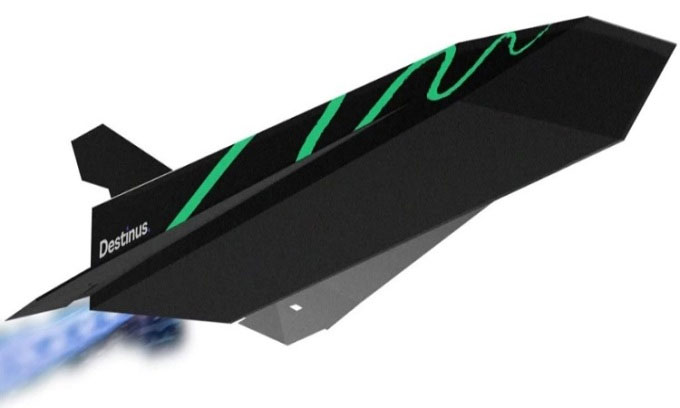The hybrid aircraft missile model using clean hydrogen fuel from Destinus SA can fly between continents in just a few hours.
The Swiss aerospace startup Destinus SA plans to manufacture a hydrogen-powered supersonic cargo aircraft to meet the demand for fast and clean transportation. Destinus has taken a further step toward its goal after raising $29 million in its first funding round.

Design of the Jungfrau supersonic aircraft prototype. (Photo: Destinus)
The biggest advantage of using hydrogen is that it emits no carbon. When burned as fuel, hydrogen produces water as a byproduct, which can be separated again using environmentally friendly methods for reuse. Destinus aims to develop a hybrid supersonic model that combines features of both an aircraft and a rocket. The vehicle does not require special infrastructure, as it can use existing airports for takeoff and landing. However, upon reaching a certain altitude, the prototype will switch to cold fuel rocket engines to fly forward at supersonic speeds, reducing travel time between continents to just a few hours.
Currently, Destinus is developing the Jungfrau prototype powered by liquid hydrogen. The vehicle can fly at speeds exceeding 18,500 km/h at a cruising altitude of about 60 km in the stratosphere. The company also plans to operate with a payload of one ton.
Destinus was founded by Russian businessman Mikhail Kokorich. The company now boasts a team of over 50 engineers and managers who have previously worked for Arianespace, Boeing, Airbus, Dassault, Rolls-Royce, and many other major aerospace companies.
According to Kokorich, Destinus tested a smaller prototype about the size of a car in 2011 and plans to conduct test flights of the Jungfrau prototype this year. In an interview with TechCrunch, he mentioned that the company has been granted permission to fly at subsonic speeds. Kokorich hopes to obtain permission for supersonic flight when Destinus begins working on its third prototype after the Jungfrau.


















































